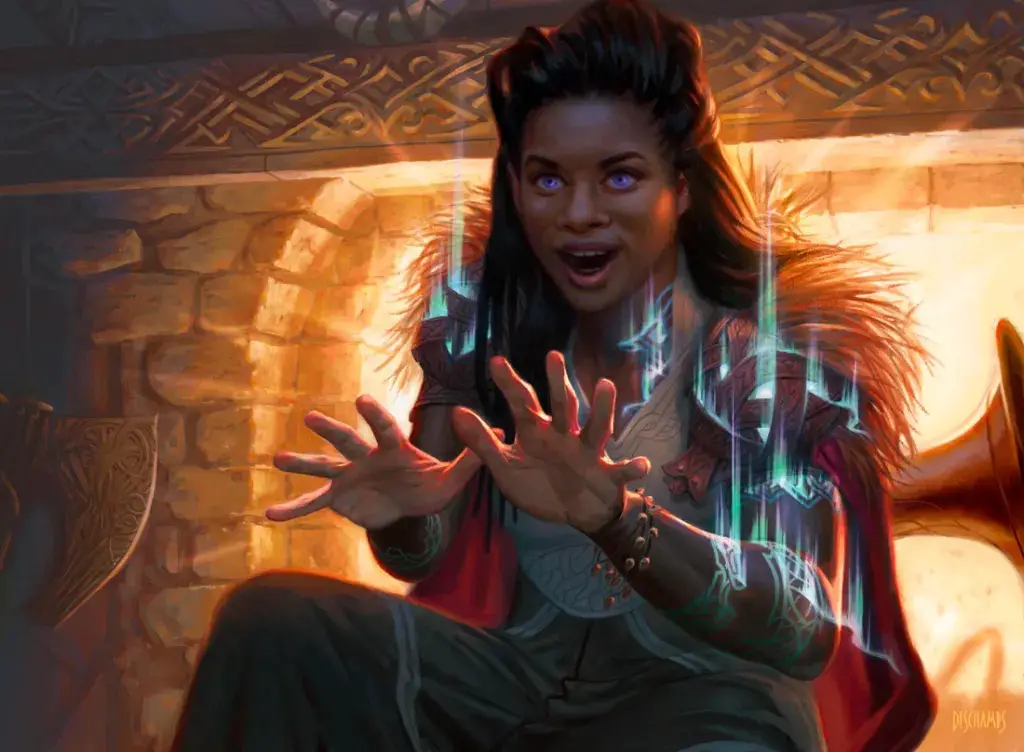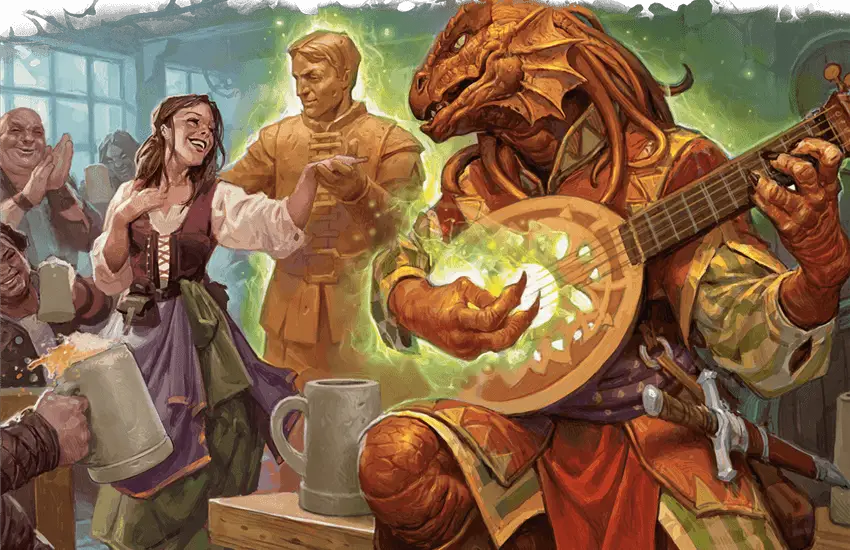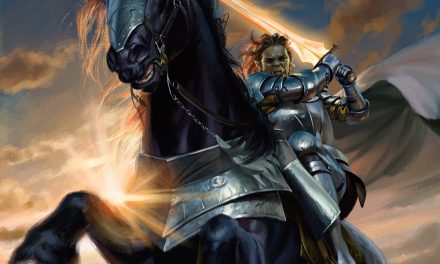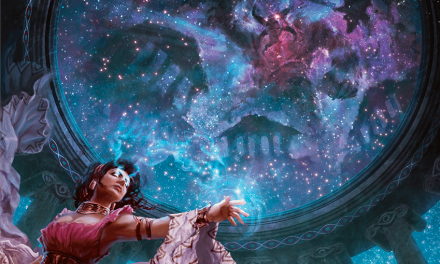One of the strangest subclasses available to Bards in D&D 5e is the College of Creation.
To them, the creative process is something that represents unlimited potential. They are problem solvers at their core and can be incredibly powerful allies.
In the hands of a creative player, the College of Creation Bard is a unique class that will let you really run wild with your imagination!
So tune up your lute and do some vocal warmups!
This is the Complete Guide to the College of Creation Bard in D&D 5e!
What is the College of Creation Bard in D&D 5e?
Bards of the College of Creation are taught that there is a frequency (a Song) that is at the very core of existence. From this song, the world as we know it was created.
These Bards express this through music, poetry, and dance according to their own abilities. By mastering this Song, the bard is able to create things from nothing and shape the world as they desire.
To them, the universe is a grand work of art that builds on new ideas and interpretations of itself.
This particularly tends to appeal to Dwarves and Gnomes as their cultures tend to value craftsmanship, inventiveness, and clever thinking. Dragonborn also tend to be drawn to this Bardic College as the greatest dragons, Bahamut and Tiamat, are portrayed as some of the first to sing the Song of Creation.
The College of Creation Bard was introduced in Tasha’s Cauldron of Everything as one of two subclass options alongside the College of Eloquence.
Role in the Party
These characters don’t just support their allies and pump out buffs and debuffs. They are able to summon objects to fit their needs in a moment which means they’ll never be caught off guard!
The point of Creation is finding solutions to problems which means that these Bards are exceptional problem-solvers.
Even by normal Bard standards, there’s a lot of utility to this class! While they might approach a given problem in their own way (instead of a Wizard or Artificer’s method), they represent the value of out-of-the-box thinking in a party.
To really fit this role in the party, you want to have good communication with your DM. Having a DM that encourages your creativity with this subclass will be important to filling its role and really getting the most out of it!
Though the next most important thing is my Complete Guide to the Bard Class in D&D 5e!

College of Creation Bard Features 5e
The College of Creation gives your Bard a new and improved version of the Bardic Inspiration ability. Additionally, your character will be able to summon objects and, pretty soon thereafter, animate objects to assist them things.
Fittingly enough, there’s a ton of potential with these abilities so let’s dive in and take a closer look!
Mote of Potential (Level 3)
Using your Bardic Inspiration ability on a creature now causes a tiny Mote of Potential to appear and orbit that creature. This might look like a music note, a flower, or any other symbol of life/art/creation that you would like.
The Bardic Inspiration functions normally, but the creature gains an extra bonus depending on what they used the die for!
Ability Check: When the creature rolls the Bardic Inspiration die to add it to an ability check, the creature can roll the Bardic Inspiration die again and choose which roll to use, as the mote pops and emits colorful, harmless sparks for a moment.
Attack Roll: Immediately after the creature rolls the Bardic Inspiration die to add it to an attack roll against a target, the mote thunderously shatters. The target and each creature of your choice that you can see within 5 feet of it must succeed on a Constitution saving throw against your spell save DC or take thunder damage equal to the number rolled on the Bardic Inspiration die.
Saving Throw: Immediately after the creature rolls the Bardic Inspiration die and adds it to a saving throw, the mote vanishes with the sound of soft music, causing the creature to gain temporary hit points equal to the number rolled on the Bardic Inspiration die plus your Charisma modifier (minimum of 1 temporary hit point)
Mote of Potential gives you a ton of extra bang for your Bard’s buck! Outside of using your Bardic Inspiration, there are no extra costs for using these abilities!
First, being able to roll twice and keep the highest result for the Bardic Inspiration bonus on an ability check is incredible. The odds of getting maximum value out of the Bardic Inspiration die make it even more likely that your ally will succeed on their ability check.
This is especially useful in those tense moments where the character has to leap over a chasm, sneak past some guards, or safely navigate the party out of a treacherous jungle. In moments like these, a bad roll on the ability check can potentially mean certain death!
The attack bonus from Mote of Potential is ok, but probably the weakest of the three effects.
Your ally gets the bonus to their attack from the Bardic Inspiration and you can potentially deal some free damage to nearby enemies that fail their Constitution save. While it’s the weakest of the three effects, extra damage is always nice!
Mote of Potential shines best with its effect when being used on a saving throw.
Because you’re giving your ally temporary hit points equal to the roll on the Bardic Inspiration die + your Charisma modifier, it’s an excellent defensive ability. If your ally makes the save to take no damage, they get free temporary hit points. If they take damage, either by failing the save or by succeeding to only take half damage, the temporary hit points provide a very useful cushion!
Related: Bardic Inspiration in D&D 5e Explained!
Performance of Creation (Level 3)
At level 3, you also gain the main ability of this subclass: Performance of Creation.
As an action, you can channel the magic of the Song of Creation to create one nonmagical item of your choice in an unoccupied space within 10 feet of you.
The item must appear on a surface or in a liquid that can support it. The gp value of the item cannot be more than 20 times your Bard level and the item must be Medium or smaller. The item glimmers softly and a creature can faintly hear music when touching it.
The created item disappears after a number of hours equal to your proficiency bonus.
It’s hard to overstate how awesome this ability is. You’ll never find yourself unprepared again!
Right from the start, you can magically create an item worth up to 60gp. That covers the overwhelming majority of the items in the Equipment section of the Player’s Handbook. Unless you’re needing to create something particularly intricate and expensive (like a spyglass, for example), you’ve got it covered.
Party needs to cross the previously-mentioned treacherous chasm?
Ta-Dah! Here’s a makeshift bridge!
Are werewolves resisting your Paladin’s (non-silvered) weapon damage?
Voila! Have a shiny new silvered sword!
Is your Fighter only making things worse by attacking that Black Pudding with a slashing weapon?
Boom! Can I offer you a Morningstar in this trying time?

Keep in mind that this feature can only be used for free once per long rest. Otherwise, you’ll need to expend a spell slot of 2nd level or higher to use it again. If you already have one item created by this effect and use it again, the first item immediately vanishes.
In a pinch, it can be worth it to burn a spell slot to use this ability. However, I wouldn’t recommend making that your default option.
If you need it, you need it, but your spell slots as a Bard are fairly sacred!
What Can Be Made With Performance of Creation?
The Performance of Creation ability is limited more by your own creativity than it is by any specific rules.
The only restrictions to what you can create are:
- The item can’t be more than 20 times your Bard level.
- The item’s size must be Medium or smaller. At level 6, it can be Large and at level 14 it can be Huge.
- The item cannot be magical
- You can only have one item at a time until you get Creative Crescendo at level 14.
The options here at limitless. Much like in The Matrix, “there is no spoon”.
This ability shines brightest when your party is saying “if we only had XYZ.”
Specifically, Performance of Creation can be used to create spell components that might otherwise be hard to come by. This might mean 300gp of diamond for Revivify, 25gp of incense for your Cleric to cast Divination, or some other spell that requires some components to cast.
Jeremy Crawford (D&D’s lead rules designer) explained here that it can be used for anything within the limits of the ability.
If your party is in a situation where a specific item would help them, it’s your time to shine!
Also Check Out: The Best Bard Spells By Level in D&D 5e!
Animating Performance (Level 6)
Oh, hey, you know that item you just made with your Performance of Creation?
Yeah… You can animate it (or any other item) now!
As an action, you can target a Large or smaller nonmagical item you can see within 30 feet of you and animate it.
The animate item uses the Dancing Item stat block, which uses your proficiency bonus (PB).
The item is friendly to you and your companions and obeys your commands. It lives for 1 hour until it is reduced to 0 hit points, or until you die.
Your Dancing Item has the same initiative count as you and takes its turn directly after yours. You don’t need to command it to move or take reactions (like an attack of opportunity), but it will only take the Dodge action unless you use your bonus action to command it otherwise.
A couple of key things to be aware of:
- If you use your Bardic Inspiration feature, you can still command your Dancing Item as part of that bonus action.
- If you’re incapacitated, the Dancing Item can take actions other than the Dodge item without your command.
- You can use your Animating Performance once per long rest. To use it again before you rest, you can expend a spell of 3rd level or higher.
- You can have one Dancing Item at a time. If you use this while another item is animated, the first item immediately becomes inanimate.
Dancing Item
Your Dancing Item is no pushover!
It has an Armor Class of 16, 10 + (5 times your Bard Level) hit points and is immune to a ton of things that naturally wouldn’t affect an object (psychic damage, poison, charms, etc.)
Oh yeah, it also flies and can understand every language that you can.
The Dancing Item’s attacks use your spell attack modifier to hit and deal a respectable 1d10 + your Proficiency Bonus damage. Keep in mind that this uses Force damage which isn’t resisted by most things you’ll be encountering.
Additionally, it has the Irrepressible Dance passive ability that creates a nifty effect around it.
A creature starting its turn within 10 feet of your Dancing Item either gains or loses 10 feet of movement (your choice) until the end of its turn.
This is great for getting your allies into or out of a fight while also putting a pretty tough penalty on your enemies’ movement!
Recommended: Magical Secrets For Bards in D&D 5e
Creative Crescendo (Level 14)
At level 14, your ability to summon items with your Performance of Creation reaches new heights!
When you use your Performance of Creation feature, you can create more than one item at once.
The number of items equals your Charisma modifier (minimum of two items).
If you create an item that would exceed that number, you choose which of the previously created items disappears. Only one of these items can be of the maximum size you can create; the rest must be Small or Tiny.
You are no longer limited by gp value when creating items with Performance of Creation.
You’re an untethered creative genius at this point. Who cares about the gold value of what you’re making? It’s ART!

You can now make one Huge item and several small or tiny ones with your Performance of Creation. By the time you get this, you’ve probably got your Charisma score up to 20, which means you can create 5 items.
As far as capstone abilities ago, this is a good one! It takes your primary ability and dials it up to 11.
Any situation you find yourself in becomes a part of your creative process at this point. Whatever you or your party need is just a Performance away now!
Connections
As a Creation Bard, you are familiar with the Song of Creation. You might be adventuring to gain creative inspiration as you pursue mastery of this powerful art.
Like we covered earlier, some cultures (like Gnomes, Dwarves, and Dragonborn) in particular really hold these Bards in high esteem. If your character isn’t from one of these cultures, have they had interactions with that culture that inspired them on this path?
Is your goal the adventure itself as you seek new sources of inspiration to perfect your creative talents? Or is there some ancient knowledge, artifact, or technique that you are seeking to help you reach a new level of talent?
As is the case with most Bards, you are able to connect yourself to the party and the game’s world pretty easily. Wherever there is a passion or need for art and creativity, you’re there!
Is the College of Creation Bard Good?
The College of Creation Bard is a good choice for players who like to get creative in how they solve problems. There are virtually no limits to what this class is able to create with their abilities.
Players who like being problem-solvers will get the most out of this class and the utility that it brings to the party.
To get the most out of this class, it’s important that you talk to your DM about your plans and abilities.
Where I would personally rule that you could create something like a Disguise Kit or a Climbing Kit (which are technically collections of items) with Performance of Creation, another DM might rule that you could only create a brush or a rope from those kits.
With DM support and fair usage of the “Rule of Cool” in your game, the College of Creation is a standout subclass option for the utility-focused Bard!
Curious to see how it measures up against the other Bard subclasses? Look no further than my full ranking!
Conclusion – College of Creation Bard in D&D 5e Guide
Confession time:
I wasn’t initially so impressed by the College of Creation Bard when it first came out. It was only later that I realized just how much of a blank canvas this class is and just how much potential it really has.
While other subclasses have specific functions with clear mechanics, the College of Creation Bard plays heavily to your own creativity and your DMs interpretation.
Color me impressed!
It might be a lot to throw at your DM if they’re new to the role, though. Definitely talk about how you envision this character playing before you start your game or in your Session Zero!
Which subclass guide would you like to see next?
Let me know in the comments and don’t forget to subscribe to my newsletter below for all the latest updates, tips, tricks, and more for D&D 5e!
You can also follow me on Facebook and Twitter.
If you found this article helpful and want to support the site, you can buy me a coffee here! (It’s not expected, but very appreciated!)
Until next time!









